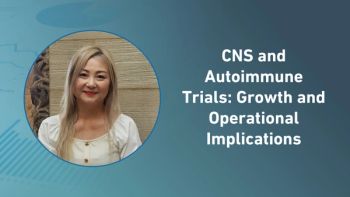
Lilly and Covance Strategic Alliance Helps Improve Patient Outcomes
Senior executives from
Executives from both companies announced key milestones of their first-year partnership as part of an Indiana Life Sciences Collaboration Conference Series titled “Effective Collaboration: A Study in Three Acts,” produced by the Indiana University Kelley School of Business and its Center for the Business of Life Sciences in collaboration with the event hosts Barnes & Thornburg LLP. Successes from the first year included significant advances in growing the Greenfield site, helping speed innovation to patients, and driving down the cost of drug development:
More than 95 percent of the 264 Lilly employees who accepted positions at Covance more than a year ago are still with the company. In addition, since October 2008, Covance has hired more than 70 new employees at Greenfield, and plans to add more than 300 additional employees there in the coming years as it continues to grow its business.
Last month, Lilly and Covance agreed to expand their relationship with a three-year biotechnology services agreement, in which Lilly will transfer bioproduct analytical testing to a new $15 million biotech facility Covance is building on its Greenfield campus. Also under the terms of the agreement, Covance has offered employment to about 20 Lilly employees and Lilly will continue to retain a handful of oversight roles to the business.
Lilly and Covance identified a path to achieving Lilly’s goal of “1000 Days to Patient” by reducing drug development cycle times. “1000 Days to Patient” begins when Lilly researchers have identified a lead molecule to begin clinical testing and ends when Phase II efficacy studies begin in patients.
Covance successfully conducted 3,800 studies for Lilly in 2009 spanning drug development from Discovery through Phase III clinical trials. These studies were conducted on-time and error free, helping Lilly with its goal of speeding innovation to patients.
Lilly is projected to save tens of millions of dollars per year as a result of its packaging of services with Covance.
Lilly has reduced its fixed costs by making some of them variable an example of Lilly’s FIPNet strategy to become more flexible and collaborative.
In addition to the services provided to Lilly, Covance has provided R&D services to approximately 20 other biopharmaceutical companies in Greenfield, enabling the company to further invest and grow the campus.
“These milestones demonstrate that this strategic alliance is already a win-win for both Covance and Lilly,” said Covance CEO Joe Herring. “In the first year, we’ve proven that we can help accelerate drug development timelines and improve efficiencies, enabling Lilly to focus on its core competencies in delivering better patient outcomes over the longer-term. The positive, collaborative working relationships between Lilly and Covance employees have been equally impressive.”
“The passion at Lilly and Covance for helping patients is evident,” remarked Andrew Dahlem, Ph.D, vice president Lilly Research Laboratories (LRL) Operations/ LRL Europe. “With the Lilly/Covance model, everyone on the team understands the end goal and their role in it, and because of this, has a greater sense of urgency and personal pride in advancing the molecule to the next stage.”
Covance will continue to invest in its Greenfield site, in order to grow it into a world-class research organization that could service the drug development needs of all pharmaceutical and biotechnology companies.
“This strategic alliance has proven it’s a win for Lilly in terms of advancing of pipeline, in terms of job opportunities for Lilly employees and for the state of Indiana, with Covance continuing to grow its business. I also see it as a win for patients – those who will benefit from new and better treatments achieved from the speed this alliance is generating and through the cost reductions Lilly is achieving,” said Bart Peterson, Lilly senior vice president corporate affairs and communications.
Lilly and Covance entered into a long-term strategic alliance in August 2008, in which Covance acquired Lilly’s preclinical research facility in Greenfield, Ind. for $50 million. As part of the agreement, Covance hired 264 former Lilly employees, and Lilly committed to providing $1.6 billion in work to Covance over 10 years for a broad range of drug development services. Covance also assumed responsibility for all of Lilly’s toxicology testing and discovery support activities at Greenfield.
Newsletter
Stay current in clinical research with Applied Clinical Trials, providing expert insights, regulatory updates, and practical strategies for successful clinical trial design and execution.






.png)



.png)



.png)
.png)
